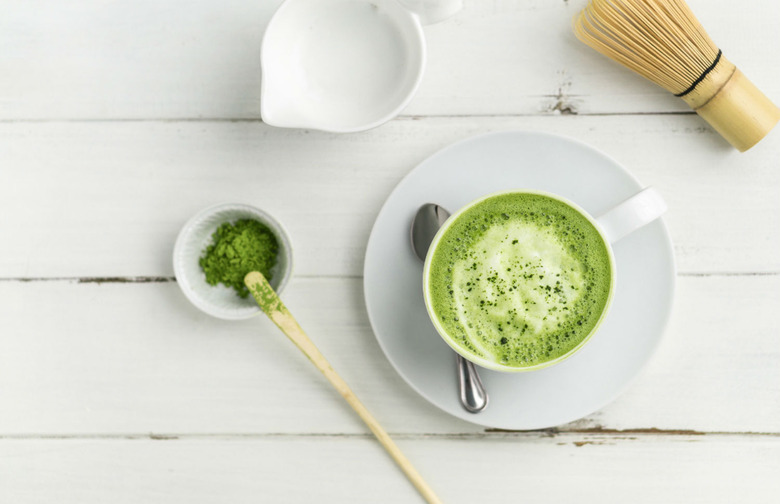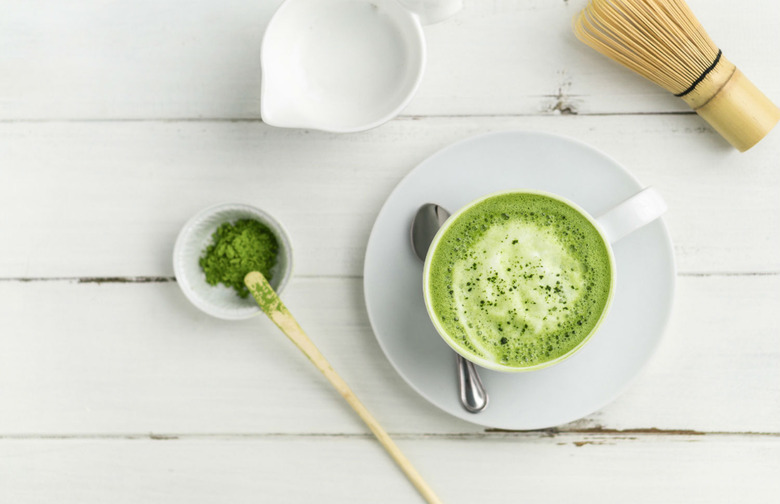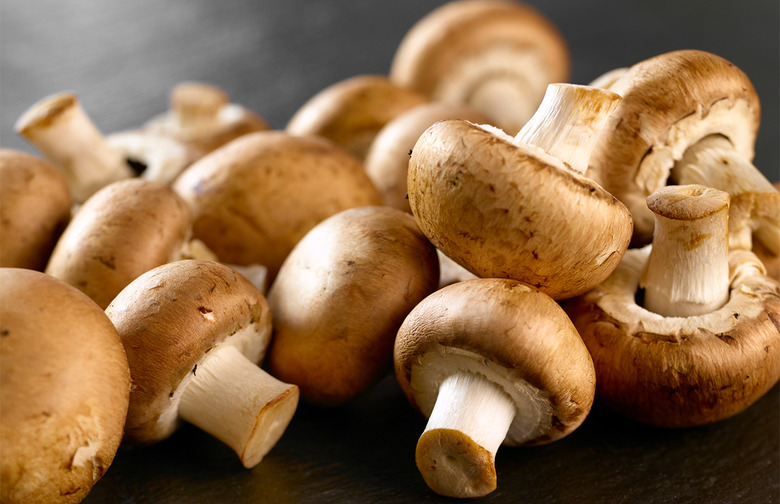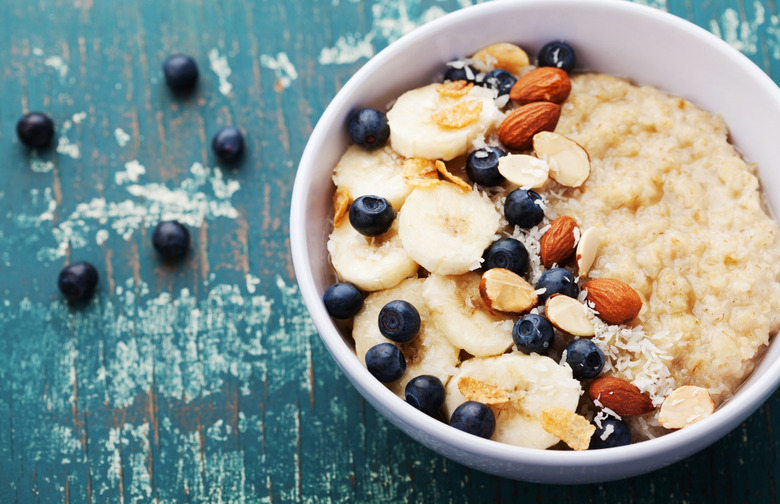Our Food Trend Predictions For 2018 Slideshow
Our Food Trend Predictions for 2018
2017 has been one heck of a year, and I think that most of us will be glad to kiss it goodbye on December 31. But 2018 looms, and with it a whole lot of unknowns. But today we're not going to predict how the stock market will perform in the year ahead; we're a food site, after all. Instead, we're taking on the far more lighthearted task of predicting which food trends will really catch on in 2018.
A Bad Year for Food Delivery Startups
As Fortune noted, Blue Apron's stock is on the decline, and as more and more meal kit startups enter the fray with less and less to differentiate them from the pack, it's only natural for the herd to start thinning as the margins continue to shrink.
Colors
Beige just isn't going to cut it any more, especially in this era of making food as Instagrammable as possible. Look for bright pops of color on just about every plate coming out of a decent restaurant's kitchen.
Flowers
One way to add color? Edible flowers. But not just that: Floral flavors, like rose, lavender, elderflower, and hibiscus, are going to start showing up in a lot more foods, Whole Foods predicts.
Grocery Shopping Continues to Evolve
A few meal kit startups might not stick around to see 2019, but that doesn't mean that the trend is dying down. Amazon has even jumped into the fray, and we can expect to see more and more people buying their groceries online, with help from shortened delivery times and sites like Instacart.
Healing Through Food
Taking a cue from Hindu ayurvedic medicine, we can expect to see more and more people thinking of food as medicine, Food and Drink Resources predicts. "Healing" foods like apple cider vinegar, kefir, and turmeric have already caught on, but expect to see many more come to the forefront as more and more people look to food as a natural remedy for ailments including inflammation, digestive issues, depression, and fatigue.
Increasing Wine Prices
Extreme weather in wine-producing countries including France, Spain, and Italy, along with the wildfires in California, will result in wine shortages next year, Fortune predicts.
Knowing Your Food’s Provenance
"Knowing where your food comes from will continue to be something that both chefs and consumers are interested in," chef Curtis Stone told us. "I always try to source ingredients from local farms or sources I'm familiar with. In fact, at my restaurant I am constantly switching up the menu to incorporate fresh, seasonal ingredients."
Middle Eastern Cuisine
The wide and varied cuisine of the Middle East, with its bold flavors and creative spice blends, will finally go mainstream next year, Whole Foods predicts. Expect to see shakshuka on more menus, as well as dishes that are seasoned with z'houg and za'atar.
More Bowls
Grain bowls are already very popular, but expect to see more of them on menus, as well as more bowl-centric restaurants. Food and Drink Resources predicts that the "new salad" will be comprised of your choice of grain, green, roasted vegetable, and dressing.
Mushrooms
Mushrooms are high in umami, meat-free, easily to source locally, and incredibly versatile, making them a shoo-in for a top 2018 trend. Expect to see them pickled, roasted, braised, smoked, brined, grilled, and even turned into tea.
New Flours and Sweeteners
Lots of restaurants are already beginning to mill their own flours and incorporate new ones (including lots of gluten-free ones) into their dishes, so you can expect that trend to continue. Plain old table sugar is also giving way to different sweeteners, like sorghum, brown rice syrup, and coconut sugar.
No-Waste Cooking
"Nose to tail" cooking is already extremely popular, but expect to see the trend continue to incorporate vegetables as well, and not just in restaurant dishes, Whole Foods predicts. Don't be surprised to find pickled watermelon rinds on the supermarket shelf soon.
Nostalgia
There's a heavy wave of nostalgia rolling over the nation, and it's affecting what and how we eat. Sites like Goldbely are shipping foods we miss from the places we grew up across the country; and throwback dishes like prime rib, roast chicken, meatloaf, and deviled eggs, along with all sorts of comfort foods, are only getting more popular.
Oats
The trend of doctoring up oatmeal — especially the overnight variety — with fruits and other flavorings like nuts, coconut, and chocolate, will only continue to grow.
One Ingredient, Infinite Possibilities
Whole-animal butchery is a popular trend at restaurants, and we don't expect to see that abating any time soon. But more and more restaurants will feature one ingredient across multiple dishes in order to showcase multiple preparations. "One of the cooking approaches I'm really trying to highlight now is how the same ingredient can have multiple applications across the menu without a guest feeling things like 'I had beets in my salad and now I'm having beets in my entrée,'" Gerron Douglas, the executive chef at Conrad New York, told us.
Powders
Powders like matcha, cacao, ground turmeric, maca root, and powdered egg whites are increasing in popularity, and Whole Foods predicts that we'll start finding more of them in "everything from nutrition bars to soups to baked goods" in order to give these products a flavor and nutrition boost.
Sparkling Everything
We want soda, but not necessarily the calories and chemicals they contain — so we're increasingly turning to sparkling beverages like LaCroix, or making them ourselves with SodaStreams. Don't be surprised if you find even more all-natural sparkling beverages — even cold-brew coffee — on the shelves next year.
Upscale Non-Alcoholic Cocktails
If a diner doesn't want a soda or an alcoholic drink, but wants something more exciting than iced tea or water, an increasing number of restaurants are tasking their bar staff with creating beverages that are just as creative and tasty as cocktails, but without the booze.
Vegetable-Focused Everything
Big portions of meat are out; vegetables are in. Meatless "fast food" chains like By Chloe, Amy's Drive-Thru, and Plant Power Fast Food are ramping up expansion plans; meat-free burgers like Beyond Burger and the Impossible Burger are showing up on more and more restaurant menus; and better technology is making nut milks and other vegan nut-derived products tastier and easier to produce. Diners are also ordering more vegetables than in the past. "We are clearly going way more vegetable-focused than ever before," chef Bobby Flay told us. "The more vegetables I put on my menu at Gato, the more I sell. So, I think that you're going to see way more all vegetarian restaurants where you don't even need meat on the menu."
Whole, Real Ingredients
"With the abundance of really great small-batch purveyors popping up all around the country, I think we're going to see an increase in demand of our guests wanting to purchase and enjoy food and dishes made with whole, real ingredients," chef Charlie Palmer told us. "This past year we saw a big push for alterative meats and proteins in fast-casual type restaurants, but I think the quality and abundance of great local ingredients and meats will bring guests into dining rooms."
Let's not forget the fact that 2017 had some really, really dumb food trends.





















